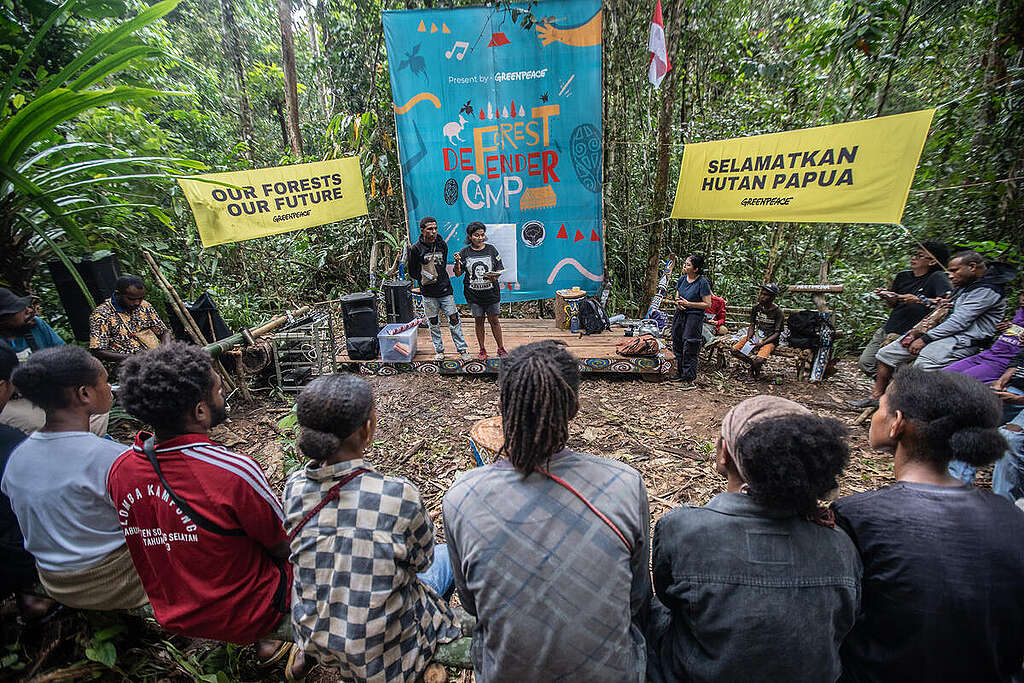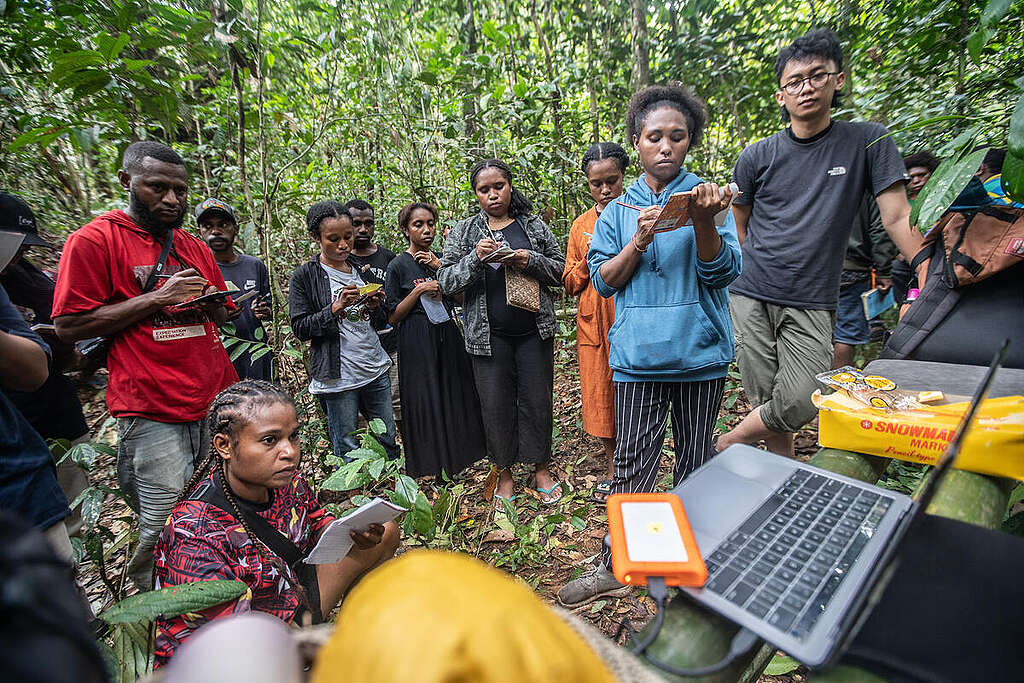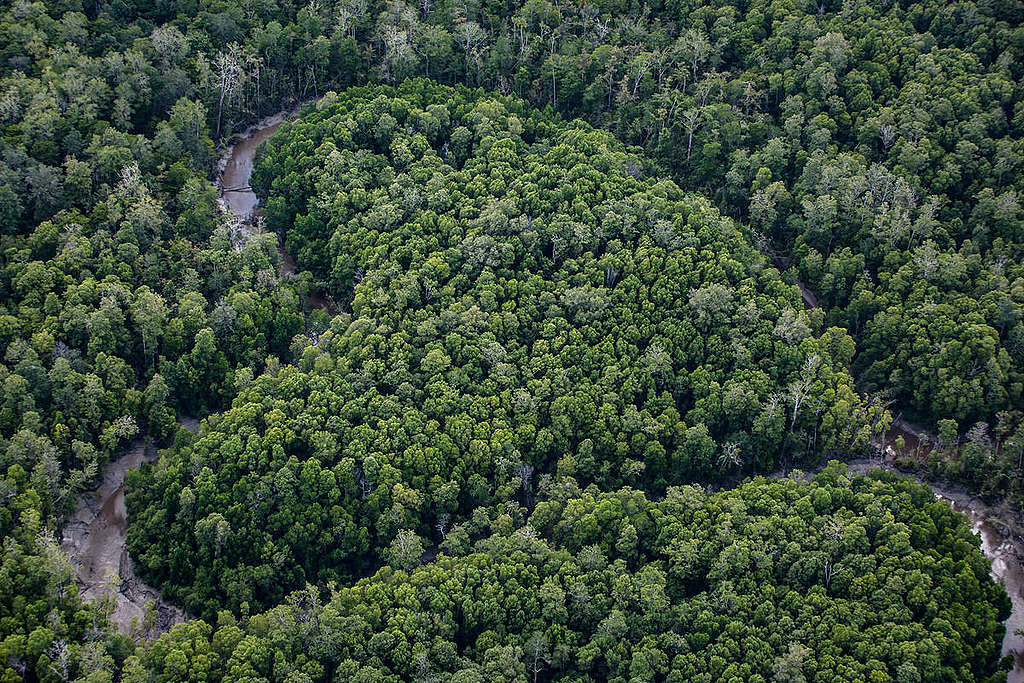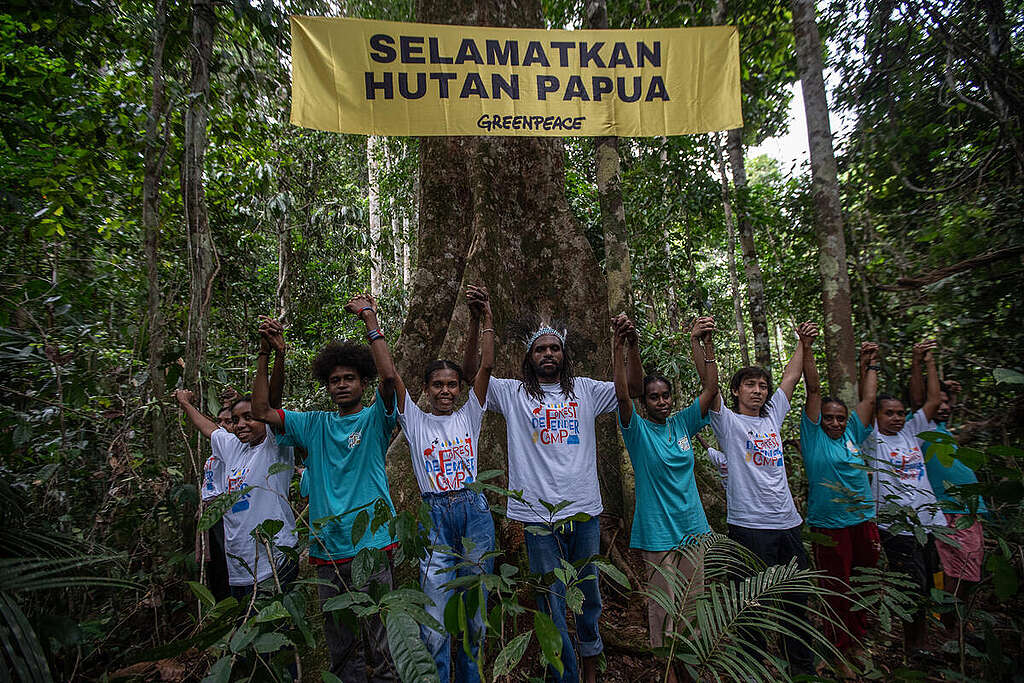South Sorong — Over a hundred indigenous youths came together for the ‘Forest Defender Camp’ event, organized by Greenpeace Indonesia and the local communities of Sadir Wet Yifi and Bentara Papua. The event was held in Manggroholo-Sira Village in Saifi District, South Sorong Regency- part of the newly formed Southwest Papua province and home to the Knasaimos People.
“This camp was organized to encourage indigenous youths to play an active role in responding to environmental problems, as well as to empower them to ask the government to recognize our customary land and our rights as Indigenous Peoples,” said Sadir Wet Yifi leader Franky Sremere. The Sadir Wet Yifi is a Knasaimos community of young people, the name is derived from the Tehit traditional language which means the voice of youths.

Most of the camp’s youth participants came from all over Papua, including Greater Sorong, South Sorong where the camp is located, to the famous tourism destination of Raja Ampat. There were also representatives from Manokwari, Jayapura, Boven Digoel, and Merauke. Among the participants were indigenous youths from communities impacted by the expansion of extractive industries in Papua.
For three days, these indigenous youths participated in a series of discussions and workshops where they learned new skills, such as customary land participatory mapping. In the village of the indigenous Knasaimos, participants spent the night in huts built of wood and roofed with woven sago leaves. Knasaimos women prepared and served local food, such as grilled sago, papeda, sweet potatoes, and so on, for meals.

“We are glad to be here in this camp, where indigenous youths from across the island can sit together and talk about issues we commonly face in Papua, particularly on our customary land. We hope to find solutions to protect our customary lands and forests, from Sorong to Merauke. What we learned and shared here inspires us to act together and build a youth movement,” said Orpa Novita Yoshua, an indigenous Namblong woman from Grime Nawa Valley. The Namblong community is struggling to protect their beautiful valley that is rich in biodiversity, now being threatened by illegal land clearing by a palm oil company.
The Papuan forests are the largest remaining rainforest in Indonesia which is home to the world’s third-largest tropical forest with the most biodiversity on earth. The forests are home to thousands of flora and fauna, most of which are endemic to the area. Some of these species are still unknown to science. The island is also home to 271 Indigenous communities who live along the coasts and within the wilderness of Papua’s interior.

Despite its importance as a global biodiversity hotspot, Papuan forests are under threat from deforestation. Plantations and mining industries, as well as illegal logging, are rampant in the area. According to Greenpeace International’s report License to Clear: The Dark Side of Permitting in West Papua, nearly one million hectares of forests were cleared for plantations during the period between 2000 and 2019.
“The Papuan region can be described as paradise on earth. It’s nice to see these indigenous youths coming together to learn and discuss ways to protect their forest home and it’s important they do so. In Indonesia, over 75% of our natural resources are controlled by a mere 1% of oligarchs who use their wealth and power to influence policymakers for their own interests. The future of the Papuan forests is in the hands of these indigenous youths and they must continue to defend their forests for succeeding generations,” said Kiki Taufik, Greeenpeace Global Head of Indonesia Forest Campaign.

© Jurnasyanto Sukarno / Greenpeace
It is critical that the Indonesian government recognizes the importance of these indigenous forests and lands in order to protect them from further loss. These forests store a significant amount of carbon, playing a crucial role in keeping the temperature rise below 1.5 degrees Celsius. By saving the Papuan forests, the Indonesian government can demonstrate their commitment in addressing the global climate crisis.
Link to photos
Media Contact:
Kiki Taufik, Global Head Indonesia Forest Campaign, Greenpeace Indonesia
E: [email protected]; M: +62 811-8706-074
